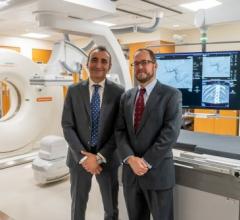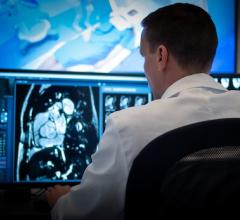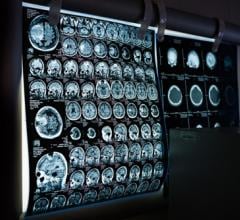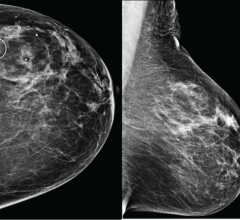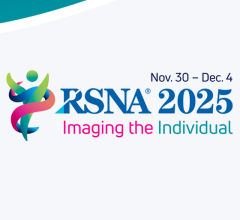
March 10, 2009 - Interventional radiologists are using image-guided stem cell therapy to create new or more blood vessels to treat peripheral arterial disease (PAD) in those individuals with extensively narrowed or clogged arteries, reported a study presented at the Society of Interventional Radiology’s 34th Annual Scientific Meeting.
By using simple imaging to view and locate transplanted stem cells and to confirm that they remain alive in the body once injected, interventional radiologists treat severe cases of PAD with minimally invasive treatments, including angioplasty and insertion of stents. “However, some patients have extensive disease - with so many blood vessels affected - that they’re difficult to treat,” said Frank Wacker, M.D., interventional radiologist at Johns Hopkins School of Medicine in Baltimore, MD. That’s where stem cells - and image-guided stem cell therapy - come in. “One day, stem cells may enable the targeted delivery of cellular treatments to PAD patients who may be facing amputation and death. It will be important to deliver the right amount of drug treatment to the right place, thus allowing tailored treatment for individual patients,” said Wacker. “The use of C-arm CT for image-guided delivery in the angio lab enabled us to precisely target cell delivery in relationship to blood vessels without transferring to a separate CT scanner to obtain the similar information,” he added. Stem cell therapy may provide interventional radiologists with a new weapon to fight PAD, a disease that affects 12 to 20 percent of Americans age 65 and older.
“To develop new stem cell treatments for PAD, we need suitable noninvasive methods to track the fate of stem cells clearly inside the body,” said veterinary radiologist Dara L. Kraitchman, V.M.D., Ph.D., an associate professor at Johns Hopkins School of Medicine. Transplanting stem cells derived from bone marrow (not embryonic stem cells), accompanied by necessary immune-suppressing drugs, has had mixed results. Rejection by the body's immune system is a likely reason for transplant failure. Because X-ray agents are toxic to stem cells, tracking of stem cell therapy cannot be done by directly labeling the stem cells themselves. Hopkins researchers used a new technique that encloses stem cells in an alginate capsule or "bubble" made from seaweed that contains stem cells to create factors to recruit the building of new vessels along with an X-ray-visible contrast agent. Tested in a rabbit model for the first time, the bubble prevents the body's immune system from reaching and attacking the transplanted cells. "We needed to figure out how to protect transplanted stem cells that are vulnerable to attack by a recipient's immune system and 'see' the cells to determine if they remained alive or not," said Kraitchman. "By making sure our protective covering for stem cells stayed intact, we were able to track where we put the stem cells and confirm whether they could survive," explained Kraitchman.
“These bubbles, which can be transplanted into a leg, can then be placed accurately at blocked blood vessels that need intervention,” said Kraitchman. However, even visible with X-ray imaging, researchers could not determine if the stem cells within the bubble remained alive. Researchers then induced the stem cells within the bubble to produce luciferase, a bioluminescence imaging agent produced by fireflies - to see living stem cells. “We could ‘see’ the bubble via X-ray and tell if the stem cells remained alive as they lit up much like a firefly at night,” said Kraitchman, who added that all agents used to form the bubble are approved by the Food and Drug Administration.
The future hope is to use adult stem cells extracted from a healthy donor’s bone marrow and inject the cells into the patients’ legs where circulation problems exist, stimulating the growth of new or more blood vessels in the leg, thus improving circulation, said Wacker. Previous studies in animals and other laboratory tests show that the injections of stem cells have such an effect and have prompted human trials, she added. Hopkins researchers took rabbit stem cells - separated from bone marrow in the lab - and injected them into the animal’s hind quarter to track them. “Our research could eventually help PAD patients by providing a process for stem cells to thrive in the body and make more blood vessels or new blood vessels,” he noted. “Using an animal model, we found that our research opens the door to delivering stems cells exactly where they are needed, allowing them to ‘recruit’ new blood vessels,” added Wacker.
Bone marrow stem cells, which have the ability to renew themselves, could unlock the door to treat PAD with cell-based treatments. Stem cells are master or undifferentiated cells that have the ability to continuously divide and develop into other specialized types of cells. When conditions are just right, stem cells can begin to develop into specialized tissues and organs or turn into more specialized cells that are self-sustaining by replicating through cell division. Once healthy stem cells are harvested like blood for blood transfusions, they could be injected into a diseased part of the body for growing healthier new blood vessels. Because of their uniqueness, researchers are exploring the use of stem cells for the treatment of life-threatening diseases.
Abstract 133: "Using X-ray Trackable Encapsulated Stem Cells to Guide Reporter Probe Delivery with C-Arm CT," D.A. Kedziorek, P. Walczak, Y. Fu, F. Wacker, D.L. Kraitchman, Johns Hopkins University, Baltimore, Md., SIR 34th Annual Scientific Meeting March 7-12, 2009.
For more information: www.SIRmeeting.org


 December 10, 2025
December 10, 2025 


